Umur Aybars Ciftci
My Body My Choice: Human-Centric Full-Body Anonymization
Jun 13, 2024Abstract:In an era of increasing privacy concerns for our online presence, we propose that the decision to appear in a piece of content should only belong to the owner of the body. Although some automatic approaches for full-body anonymization have been proposed, human-guided anonymization can adapt to various contexts, such as cultural norms, personal relations, esthetic concerns, and security issues. ''My Body My Choice'' (MBMC) enables physical and adversarial anonymization by removal and swapping approaches aimed for four tasks, designed by single or multi, ControlNet or GAN modules, combining several diffusion models. We evaluate anonymization on seven datasets; compare with SOTA inpainting and anonymization methods; evaluate by image, adversarial, and generative metrics; and conduct reidentification experiments.
My Art My Choice: Adversarial Protection Against Unruly AI
Sep 06, 2023Abstract:Generative AI is on the rise, enabling everyone to produce realistic content via publicly available interfaces. Especially for guided image generation, diffusion models are changing the creator economy by producing high quality low cost content. In parallel, artists are rising against unruly AI, since their artwork are leveraged, distributed, and dissimulated by large generative models. Our approach, My Art My Choice (MAMC), aims to empower content owners by protecting their copyrighted materials from being utilized by diffusion models in an adversarial fashion. MAMC learns to generate adversarially perturbed "protected" versions of images which can in turn "break" diffusion models. The perturbation amount is decided by the artist to balance distortion vs. protection of the content. MAMC is designed with a simple UNet-based generator, attacking black box diffusion models, combining several losses to create adversarial twins of the original artwork. We experiment on three datasets for various image-to-image tasks, with different user control values. Both protected image and diffusion output results are evaluated in visual, noise, structure, pixel, and generative spaces to validate our claims. We believe that MAMC is a crucial step for preserving ownership information for AI generated content in a flawless, based-on-need, and human-centric way.
How Do Deepfakes Move? Motion Magnification for Deepfake Source Detection
Dec 28, 2022



Abstract:With the proliferation of deep generative models, deepfakes are improving in quality and quantity everyday. However, there are subtle authenticity signals in pristine videos, not replicated by SOTA GANs. We contrast the movement in deepfakes and authentic videos by motion magnification towards building a generalized deepfake source detector. The sub-muscular motion in faces has different interpretations per different generative models which is reflected in their generative residue. Our approach exploits the difference between real motion and the amplified GAN fingerprints, by combining deep and traditional motion magnification, to detect whether a video is fake and its source generator if so. Evaluating our approach on two multi-source datasets, we obtain 97.17% and 94.03% for video source detection. We compare against the prior deepfake source detector and other complex architectures. We also analyze the importance of magnification amount, phase extraction window, backbone network architecture, sample counts, and sample lengths. Finally, we report our results for different skin tones to assess the bias.
How Do the Hearts of Deep Fakes Beat? Deep Fake Source Detection via Interpreting Residuals with Biological Signals
Aug 26, 2020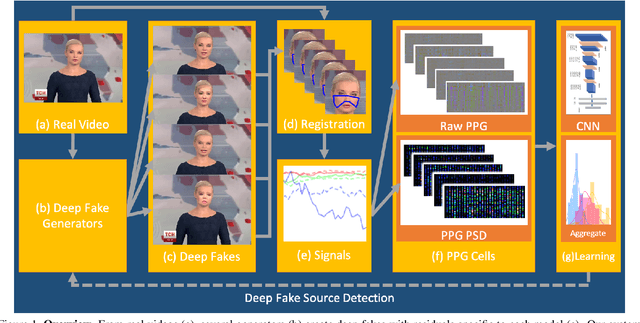


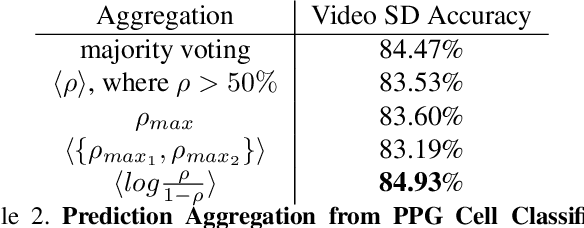
Abstract:Fake portrait video generation techniques have been posing a new threat to the society with photorealistic deep fakes for political propaganda, celebrity imitation, forged evidences, and other identity related manipulations. Following these generation techniques, some detection approaches have also been proved useful due to their high classification accuracy. Nevertheless, almost no effort was spent to track down the source of deep fakes. We propose an approach not only to separate deep fakes from real videos, but also to discover the specific generative model behind a deep fake. Some pure deep learning based approaches try to classify deep fakes using CNNs where they actually learn the residuals of the generator. We believe that these residuals contain more information and we can reveal these manipulation artifacts by disentangling them with biological signals. Our key observation yields that the spatiotemporal patterns in biological signals can be conceived as a representative projection of residuals. To justify this observation, we extract PPG cells from real and fake videos and feed these to a state-of-the-art classification network for detecting the generative model per video. Our results indicate that our approach can detect fake videos with 97.29% accuracy, and the source model with 93.39% accuracy.
FakeCatcher: Detection of Synthetic Portrait Videos using Biological Signals
Jan 08, 2019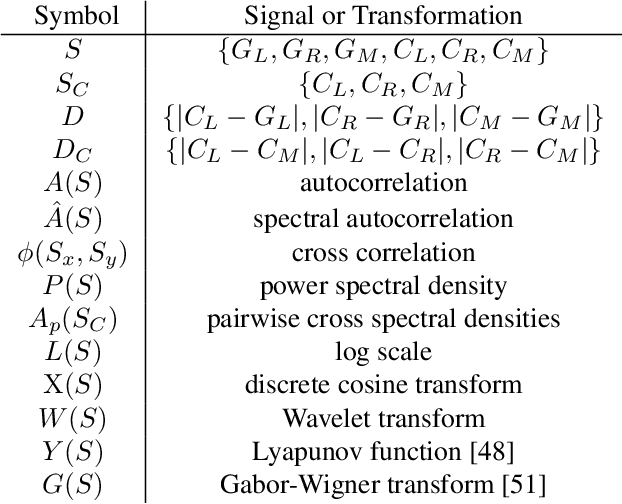

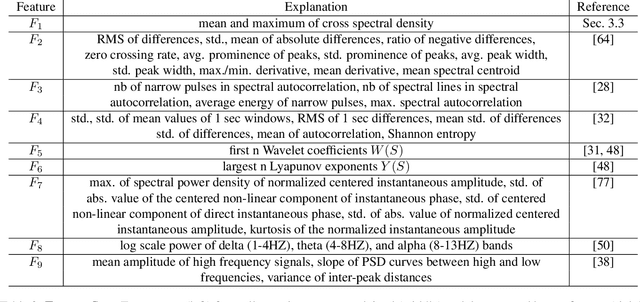
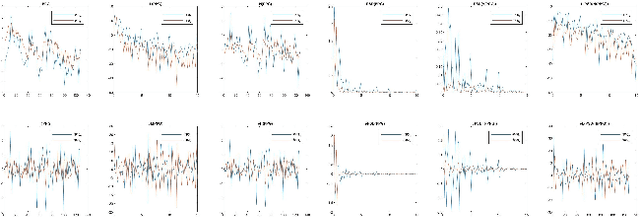
Abstract:As we enter into the AI era, the proliferation of deep learning approaches, especially generative models, passed beyond research communities as it is being utilized for both good and bad intentions of the society. While generative models get stronger by creating more representative replicas, this strength begins to pose a threat on information integrity. We would like to present an approach to detect synthesized content in the domain of portrait videos, as a preventive solution for this threat. In other words, we would like to build a deep fake detector. Our approach exploits biological signals extracted from facial areas based on the observation that these signals are not well-preserved spatially and temporally in synthetic content. First, we exhibit several unary and binary signal transformations for the pairwise separation problem, achieving 99.39% accuracy to detect fake portrait videos. Second, we use those findings to formulate a generalized classifier of authentic and fake content, by analyzing the characteristics of proposed signal transformations and their corresponding feature sets. We evaluated FakeCatcher both on Face Forensics dataset [46] and on our newly introduced Deep Fakes dataset, performing with 82.55% and 77.33% accuracy respectively. Third, we are also releasing this mixed dataset of synthesized videos that we collected as a part of our evaluation process, containing fake portrait videos "in the wild", independent of a specific generative model, independent of the video compression, and independent of the context. We also analyzed the effects of different facial regions, video segment durations, and dimensionality reduction techniques and compared our detection rate to recent approaches.
 Add to Chrome
Add to Chrome Add to Firefox
Add to Firefox Add to Edge
Add to Edge